Sewage from anchored ships laying waste to coral reefs in Spratlys — report
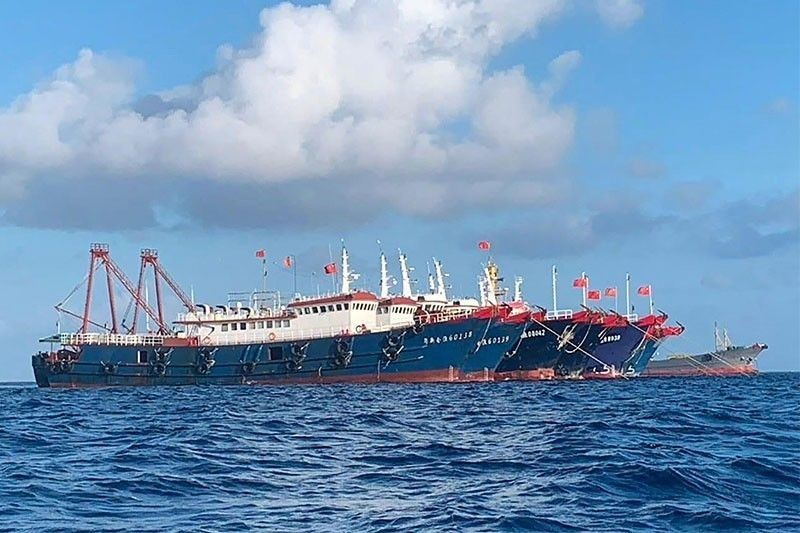
MANILA, Philippines — Raw sewage from hundreds of anchored ships in the Spratly Islands in the South China Sea, including West Philippine Sea, have damaged coral reefs in the area, according to a report from a US-based geospatial imagery and data analysis company.
Liz Derr, co-founder and CEO at Simularity, presented the Spratlys water quality report in an online forum organized by the Stratbase ADR Institute on the fifth anniversary of the South China Sea arbitral ruling.
Simularity released satellite images showing how anchored ships created chlorophyll-a blooms in Union Banks, located entirely within the country's exclusive economic zone in the West Philippine Sea.
According to the report, chlorophyll-a concentration in water is a measure of phytoplankton.
"Excess phytoplankton that cannot be consumed by the reef inhabitants dies off and sinks to the sea floor, where it consumed by bacteria," the report read.
"These bacteria consume oxygen that would normally be available to the fish, creating a 'dead zone,'" it added.
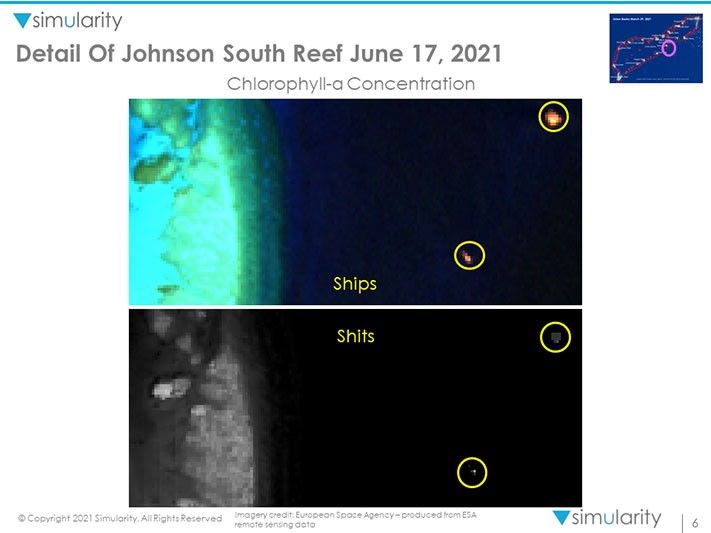

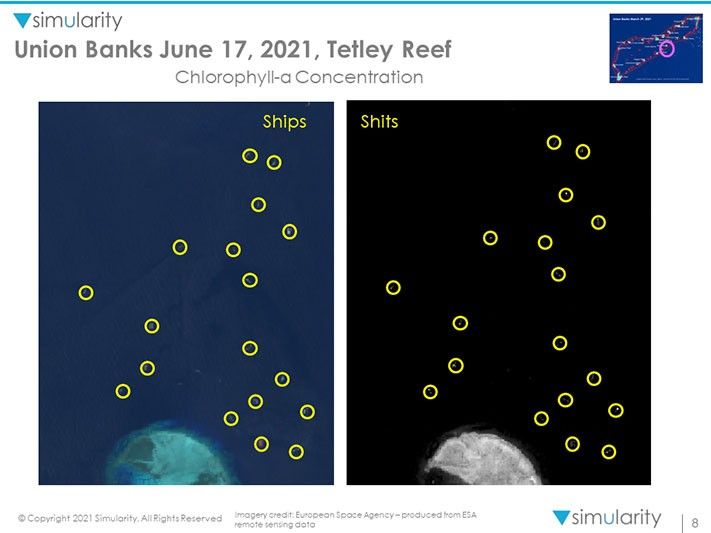
The reported showed chlorophyll-a concentration on Mabini (Johnson South), McKennan (Hughes), Pagkakaisa (Lansdowne), Ross and Roxas (Collins) Reefs.
Mabini and McKennan Reefs are occupied by China while Pagkakaisa and Roxas Reefs are occupied by Vietnam.
Satellite images showed that there had been increased chlorophyll-a concentration on these features in the past five years, indicating overgrowth of algae.
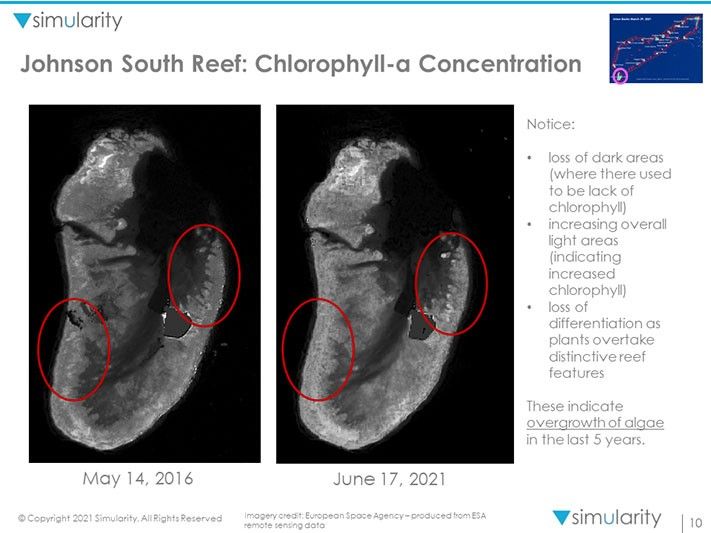
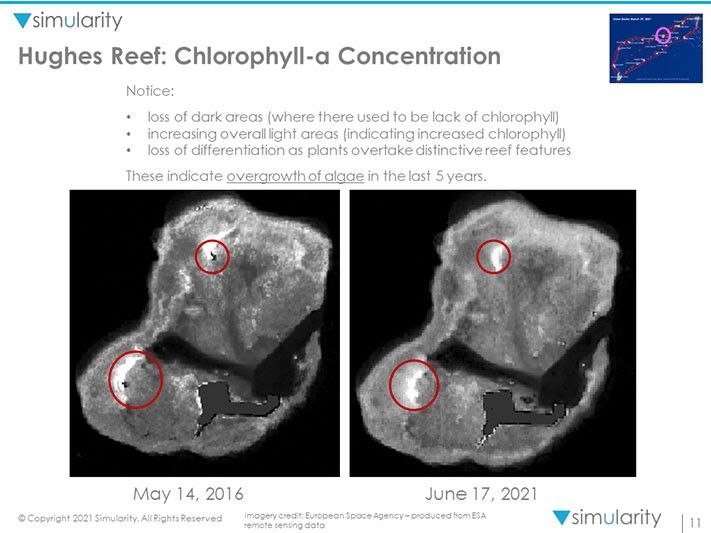
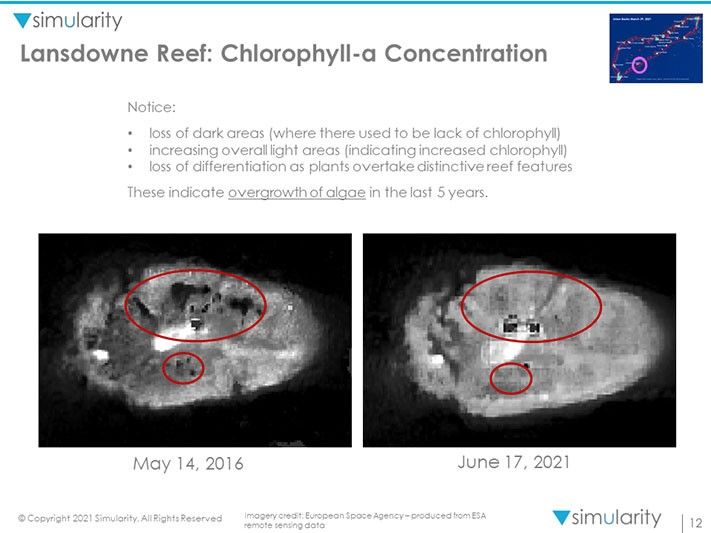
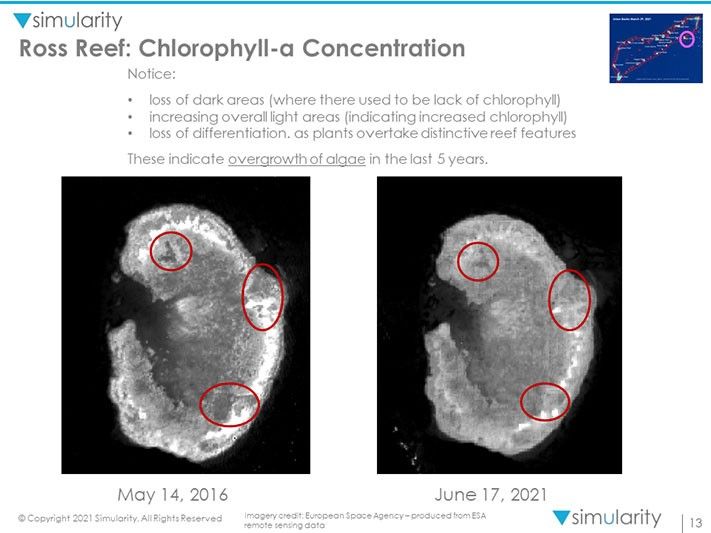

"Fleshy algae on reefs increase copious amounts of nutrients, which microbes eat. These microbes then endanger corals by depleting oxygen from the environment or by introducing diseases," Simularity reported.
What is worse is that overfishing in the waters near coral reefs have removed the primary-algae eaters, increasing the population of fleshy algae.
"Tipping the balance towards algae results in increased acidification of the water, increasing coral erosion," the report read, adding that this is in addition to increased ocean acidification from climate change.
Coral reefs in the Spratlys matter as fishes from the area supply 85% of coastal inhabitants.
Simularity also noted that Spratly reefs serve as nurseries for adult fish stock that make up the fisheries in the Philippines, Vietnam, Malaysia, Brunei and Indonesia.
"Damaging these reefs directly affects the fish stocks of the entire South China Sea and can lead to a hunger crisis in coastal regions and a collapse of commercial fishing in the South China Sea," Simularity said.
As of June 17, 236 ships, likely Chinese, have been spotted in Union Banks as seen on satellite images released by Simularity. — Satellite images from Simularity via European Space Agency
- Latest
- Trending

































